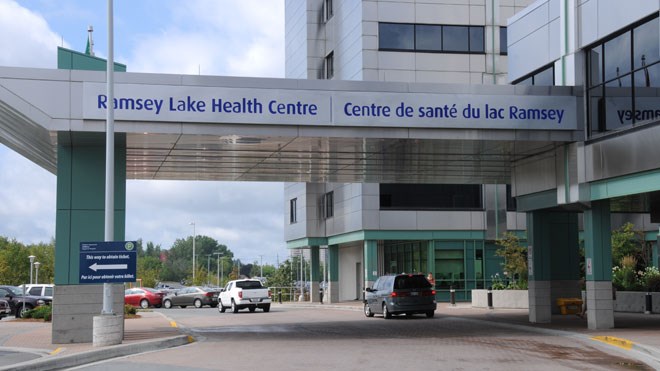The hand that holds the health-care purse strings in the northeast doesn’t appear to be overly comfortable with Health Sciences North’s new budget.
Staring down the barrel of a $10-million deficit, the hospital board, under chair Nicole Everest, backed new CEO Dominic Giroux’s first budget, a budget that aims to tackle the deficit head on and cut it in half.
But that budget makes some deep, multi-million-dollar spending cuts. It involves more than 100 job cuts. While it doesn’t cut any clinical programs (the hospital can’t do that), it is a drastic and far-reaching attempt to rein in spending and help HSN climb out of the hole it finds itself in.
The North East Local Health Integration Network (LHIN, the aforementioned holder of the purse strings) seems to feel the budget tries to do too much, too fast. It won’t allow the hospital to adopt the budget provisions until an independent review is completed, by June 30. Meanwhile the hospital appears to be trying to do what the LHIN demands — get spending under control and no running deficits.
Obviously, budgets should be respected. But when a hospital goes from posting surpluses to projecting a $10-million deficit, you have to wonder. When the region’s biggest hospitals are running deficits and struggling to find beds for patients, you have to question why.
When the region’s largest hospitals are bursting at the seams, one has to wonder how the LHIN expects HSN and, by extension, every big northeastern Ontario hospital, not to run deficits.
Hospitals are the physical manifestation of the health-care system. When people need help, they go there. Hospitals can’t turn sick people away, even if they don’t have the capacity to put everyone who needs it in a room.
And HSN isn’t the only hospital in the North, or in Ontario for that matter, providing so-called “hallway medicine.” Patients housed in hallways, bathrooms (just think about that), stuck into any free nook and cranny that can hold a bed — this, it seems, is becoming increasingly common.
Why? Why is this happening in a province that likes to pat itself on the back for its universal health care? Is that not a symptom of a flaw in the system?
In 2012, the Liberals unveiled the Right Care, Right Time, Right Place strategy for the health care system. Part of the goal is to increase community resources and better integrate the various aspects of the system to better move people toward the care and care-provider they need.
But it’s been slow to materialize and hospitals are still the primary place people turn when they need help. Ontario hospitals are told to live within their means, but are they being provided the means to live?
It doesn’t seem that way, given that the northeast’s four largest hub hospitals (HSN, Timmins and District Hospital, North Bay Regional Health Centre and Sault Area Hospital) all signed a letter to the LHIN detailing their financial constraints (which they called “precarious”) and how that is impacting their ability to provide care.
More beds aren’t the answer, at least for the long-term. The answer lies in re-structuring a health-care system that was designed for a mid-20th century society where most people died not long before or not long after retirement — in other words a system better suited to treating acute conditions, not chronic ones (like those that come with aging).
We need a system that can accommodate people who live well into their 70s and 80s, and increasingly into their 90s. Our ability to keep people alive longer — with significant and expensive medical intervention — has outpaced our ability to pay for a population that lives longer and longer, but consumes more and more health-care dollars in the process.
It’s more economical and efficient (in other words, cheaper) to keep people active and out of hospital, but the existing community infrastructure to help them do that is woefully insufficient.
Fixing it will require the political will and the willingness to spend political capital to both right the ship and redesign it while it’s still in service. It will be expensive and it will be tough, and people will complain.
Ontario’s Liberals were willing to finance billions to fix the electricity system after the blackout of 2003. We’re still paying for that and will be for some time. The Liberals were willing to cancel two natural gas plants (the gas plant scandal) to win an election, a move that cost us, the taxpayers, at least $950 million.
And yet, no one seems willing to make a concerted effort to modernize our health-care system. Meanwhile, the outdated and expensive system we have provides hallway medicine, waiting lists, overworked doctors, nurses and PSWs, and frustrated patients. It’s nothing to brag about.
The LHIN has ordered an independent review of HSN’s operations to determine the source of its budget troubles: is it a question of insufficient funds or how existing funds are being spent? In singling out HSN for this review, one hopes this is a canary-in-the-coal-mine effort to probe the root causes of overspending here, and by extension at all the northeast hub hospitals.
Our health system is ailing and Band-Aids just won’t cut it.
Mark Gentili is the editor of Sudbury.com and Northern Life.
